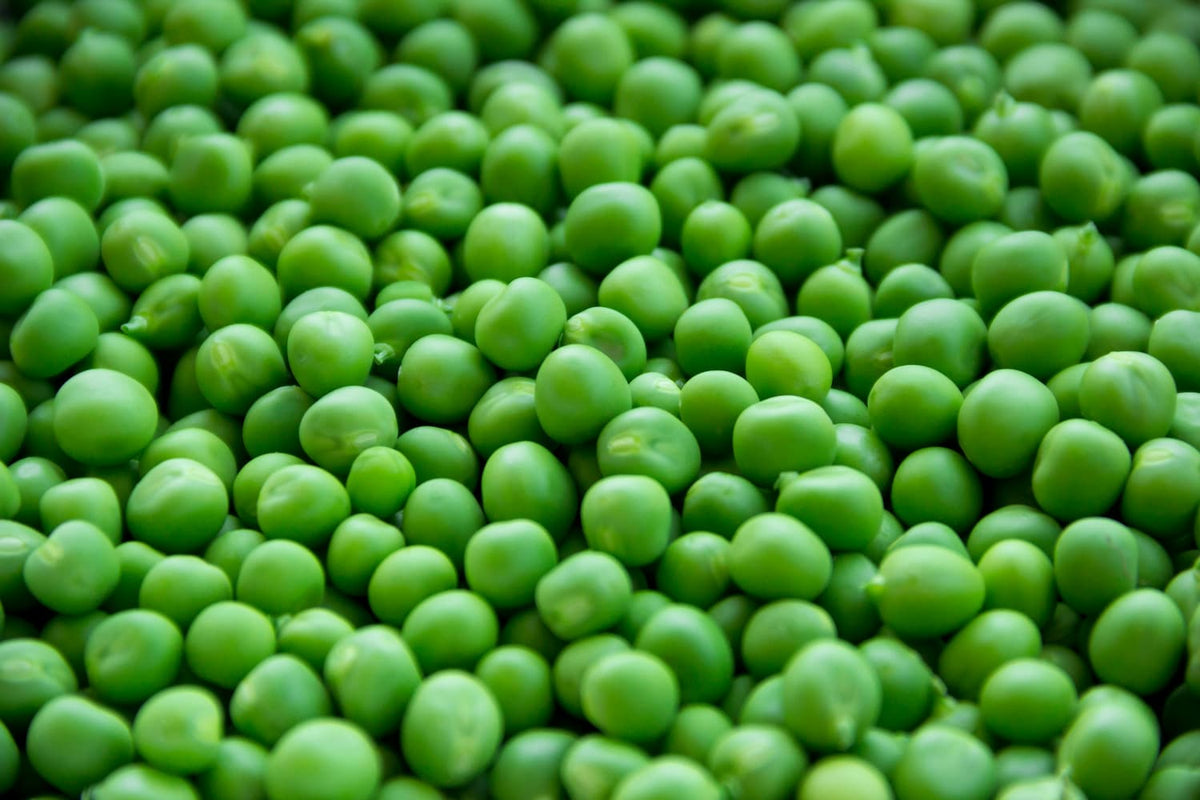
Can Dogs Eat Peas?
|
|
It’s Great British Pea Week! Peas may be small, but they’re packed with mighty nutrients. Full of fibre, protein, vitamins and minerals, these vibrant green legumes are a favourite on our dinner tables.
Peas are also often found in commercial dog food – but are they really the healthy choice for dogs they’re made out to be?
So before you fill your dog’s bowl with pea-packed food, here’s what you need to know…
Peas are small green legumes from the Pisum sativum plant, and are typically eaten fresh, frozen or dried. Common types include;
They’re rich in nutrients and are often used in both plant-based and meat-based dishes for an added boost of fibre, protein, flavour and colour.
Peas are relatively cheap to grow and easy to store making them a convenient choice for bulk pet food manufacturers. But just because something is easy to add doesn’t mean it’s the best choice for your dog’s diet!
When fed in moderation, peas can be a good addition to your dog’s diet. While they’re low in calories (perfect for dogs who are on a weight management programme).
Peas contain amounts of:
While dogs can eat raw peas, they are much more digestible when they’re cooked – just make sure that you don’t include any pods and cool them before feeding.
An occasional pea won’t hurt most dogs – but they’re far from a superfood. For dogs with sensitive stomachs, or those prone to allergies or intolerances, peas may even cause more harm than good. They can also cause flatulence!
Peas can be used heavily in dog food – especially some grain-free varieties – because they’re a low-cost way to bulk up recipes. They offer some plant-based protein and fibre, so they’re often used to pad out ingredient lists and boost protein levels on paper.
Peas often stand in for more expensive – and more biologically appropriate – ingredients like quality meat and animal fat.
There are growing concerns among vets and pet nutritionists about the overuse of peas and other legumes in dog food.
The American FDA has investigated a possible connection between diets heavy in legumes (including peas) and a form of heart disease called dilated cardiomyopathy (DCM).
The American FDA has investigated a possible connection between diets heavy in legumes (including peas) and a form of heart disease called dilated cardiomyopathy (DCM).
The American FDA has investigated a possible connection between diets heavy in legumes (including peas) and a form of heart disease called dilated cardiomyopathy (DCM).
Ultimately, peas are used because they’re cheap – not because they’re the most nutritious choice.
At Years, we don’t believe in cutting corners – especially not with your dog’s health. That’s why we never use peas (or similar fillers like lentils or soy) in any of our recipes.
Instead, our food is built around:
Yes, frozen peas are safe for dogs if served plain and defrosted. They can make a convenient, low-calorie treat when given sparingly. Just ensure they’re not seasoned or mixed with onions, garlic or butter.
Dogs can eat snow and sugar snap pea pods, but not the tough pods from garden peas, which may cause choking or digestive issues. Always serve pods plain and in bite-sized pieces to avoid any risk, and avoid feeding them to small dogs or gulpers.
Canned peas are not recommended due to high salt and preservative content, which can be harmful to dogs. If you do offer canned peas, rinse them thoroughly first. Fresh or frozen peas without added ingredients are a healthier and safer alternative.
There is concern around grain-free diets high in legumes, including peas, being linked to canine heart disease (DCM). The link isn’t fully understood, but many vets now recommend limiting legumes in dog food and choosing diets with more animal-based protein sources.
Feed your dog everything they need to thrive with our fresh dog food and they will receive

